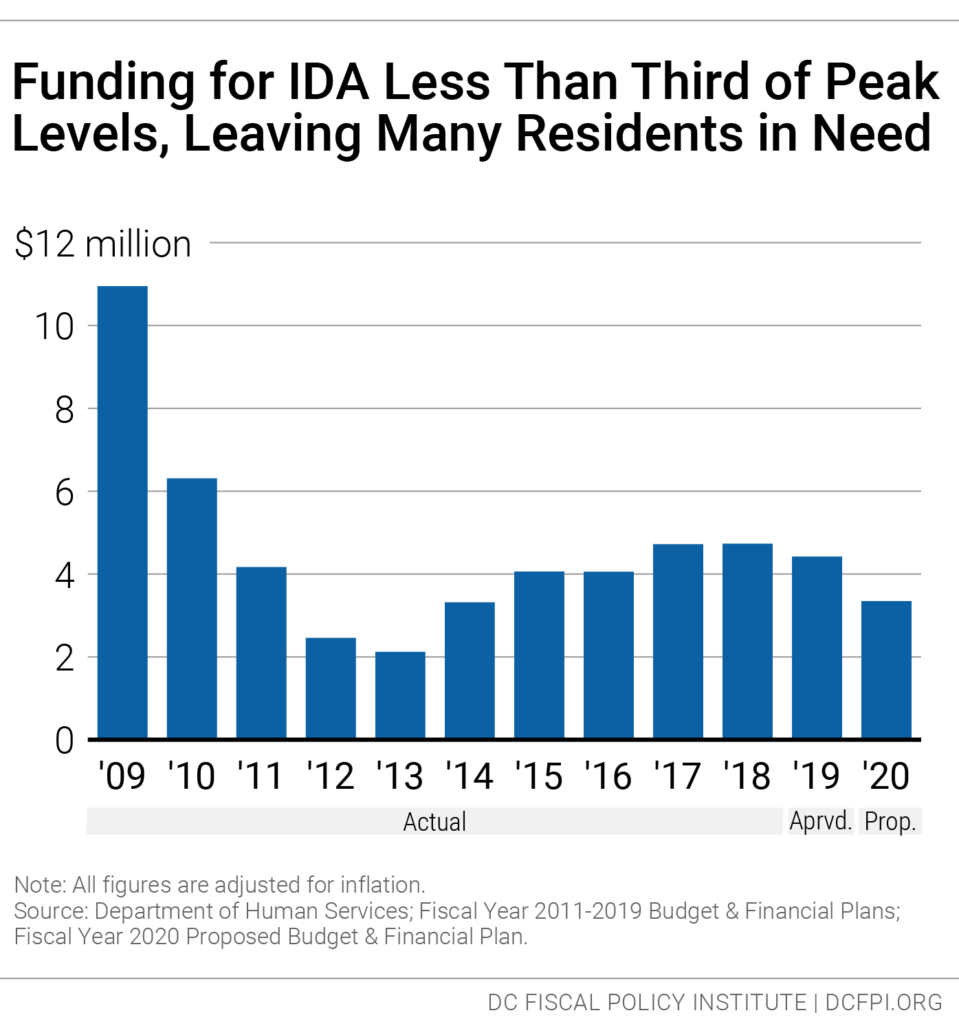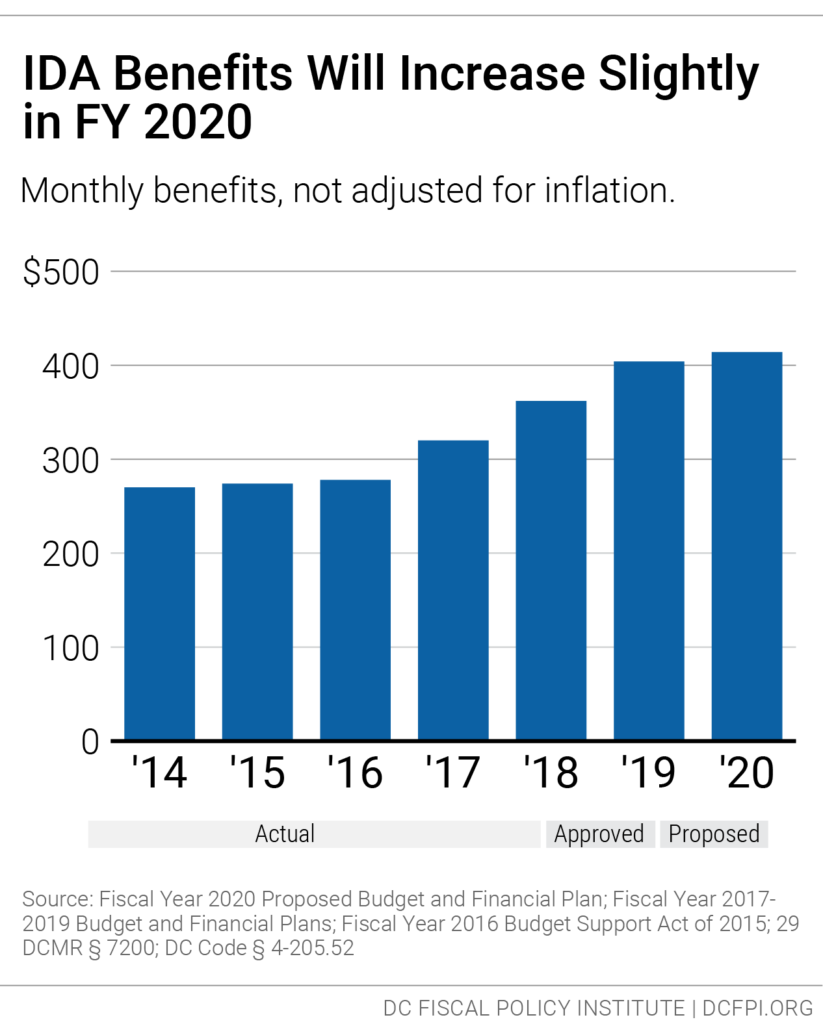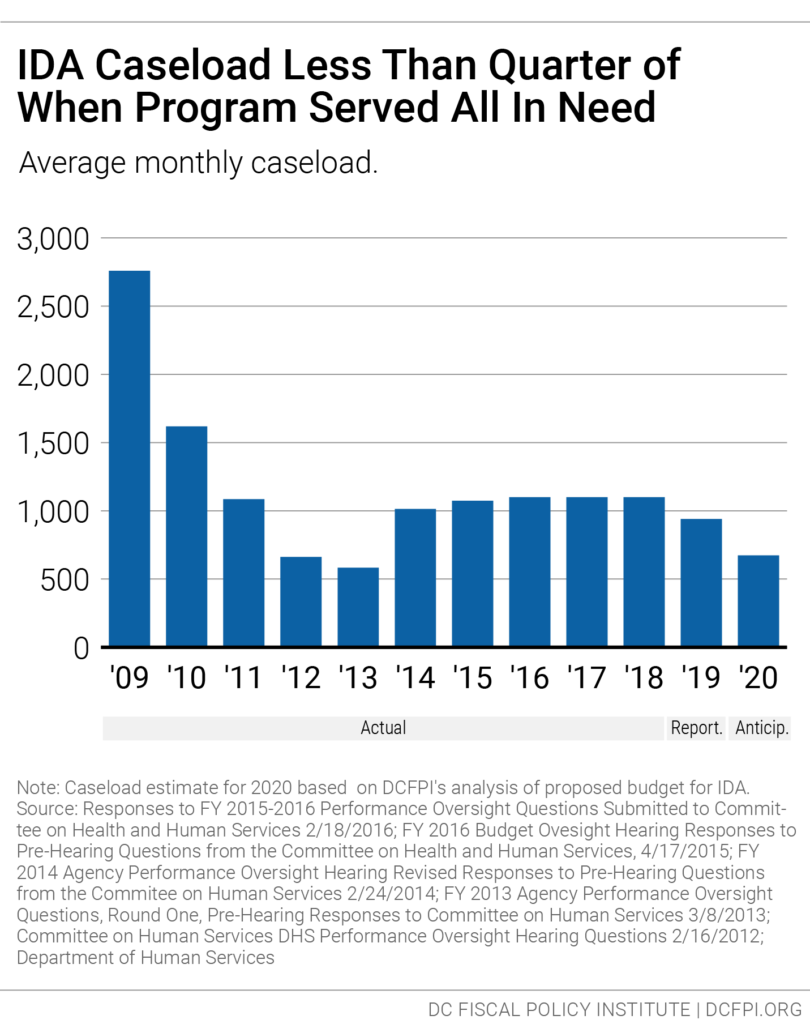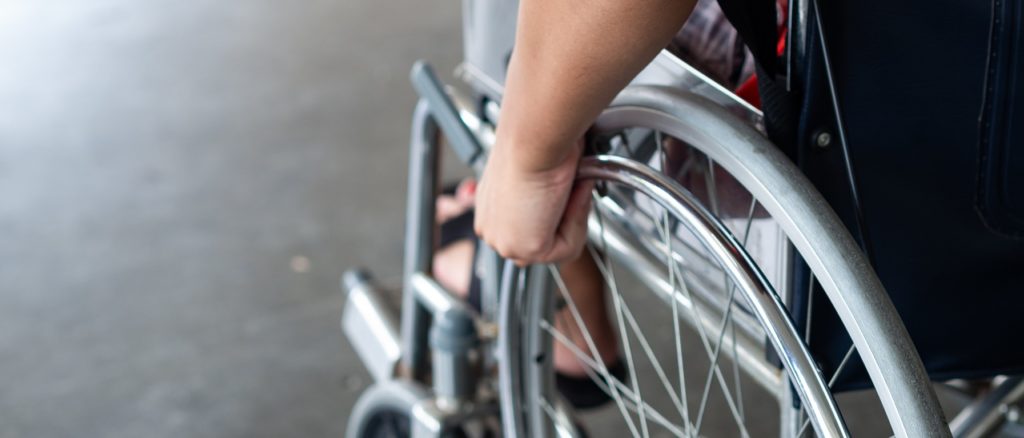Summary:
- The total proposed budget for IDA is $3.3 million, a decrease of just over $1 million from FY 2019. It also is well below the peak budget of $10.9 million in FY 2009.
- Local funding for IDA is $2.5 million, a decrease of just over $1 million.
- Monthly benefits are set to increase by a cost of living adjustment (COLA), to estimated $414.
- Only 673 people can be served each month compared with 940 in 2019 and 2,750 who were served in 2009, when enrollment wasn’t capped. This suggests that many residents cannot access benefits.
Interim Disability Assistance (IDA) provides modest, temporary cash benefits to adults with disabilities who have applied for federal disability benefits, Supplemental Security Income (SSI) or Social Security Disability Insurance (SSDI), and are awaiting an eligibility determination. The wait for federal benefit determination has skyrocketed in recent years, from 350 days in 2012 to nearly 600 days in 2017, leaving residents who are unable to work without any cash benefits.[1]
The $3.3 million total budget for fiscal year (FY) 2020 is less than one-third of the program’s historic funding. In FY 2009, IDA spent $10.9 million which allowed the District to provide benefits to all who needed them, around 2,750 residents per month (Figure 1).

IDA is a Lifeline
IDA serves as a vital lifeline for DC residents who cannot work and have no other income or other means to support themselves. IDA allows recipients to pay for basic needs such as transportation, medicine, toiletries, and food. In addition, the steady modest monthly income allows recipients to access some housing programs that are administered by nonprofit organizations and require residents to have income.
IDA is similar to interim assistance programs offered in 38 states, including Maryland and Virginia. SSI approval can take anywhere from several months to several years, with the average wait time now 600 days. The benefits paid to IDA recipients are reimbursed by the federal government if an applicant is ultimately determined to be eligible for SSI or SSDI.
IDA Budget Combines Local and Federal Funding
The FY 2020 proposed budget combines $2.5 million in local funding with $800,000 in federal reimbursement for a total budget of $3.3 million. This is a cut of nearly $1 million from FY 2019. As a result, the number of people receiving IDA benefits monthly is expected to fall to 673, down from 940 in 2019.
Federal reimbursement funds come from the Social Security Administration. When an individual is approved for SSI or SSDI, the federal government reimburses the District for the IDA benefits the individual received. These reimbursement dollars are used to support the annual budget, and unspent funds are put into DC’s SSI Payback Fund at the end of the year so the District can provide benefits for future IDA applicants.
IDA Benefits Will Rise in FY 2020
The IDA benefit level is tied to benefit levels in Temporary Assistance for Needy Families (TANF), DC’s cash benefit and workforce training program for families with children. The IDA benefit equals the TANF benefit for a household of one person (such as a pregnant mother applying for TANF). Under a policy adopted in the FY 2016 budget, TANF benefits were annually increased between 2017 and 2019 and then adjusted for cost of living annually going forward, which means that IDA benefits have increased. The IDA benefit will increase to an estimated $414 a month in FY 2020, a 2.4 percent increase (Figure 2, Table 1).[2]

Funding is Not Sufficient to Meet All Residents Who Need IDA
In FY 2009, the Interim Disability Program spent $10.9 million and was funded to serve all residents in need, around 2,750 residents per month. This is far higher than the 940 residents per month assisted now and the 673 who will be assisted each month in FY 2020. (Figure 3). The reduced funding and caseloads for IDA since 2009 suggests that many DC residents with disabilities have no regular source of income, since one of the prerequisites for applying for SSI is that an individual is unable to work.



